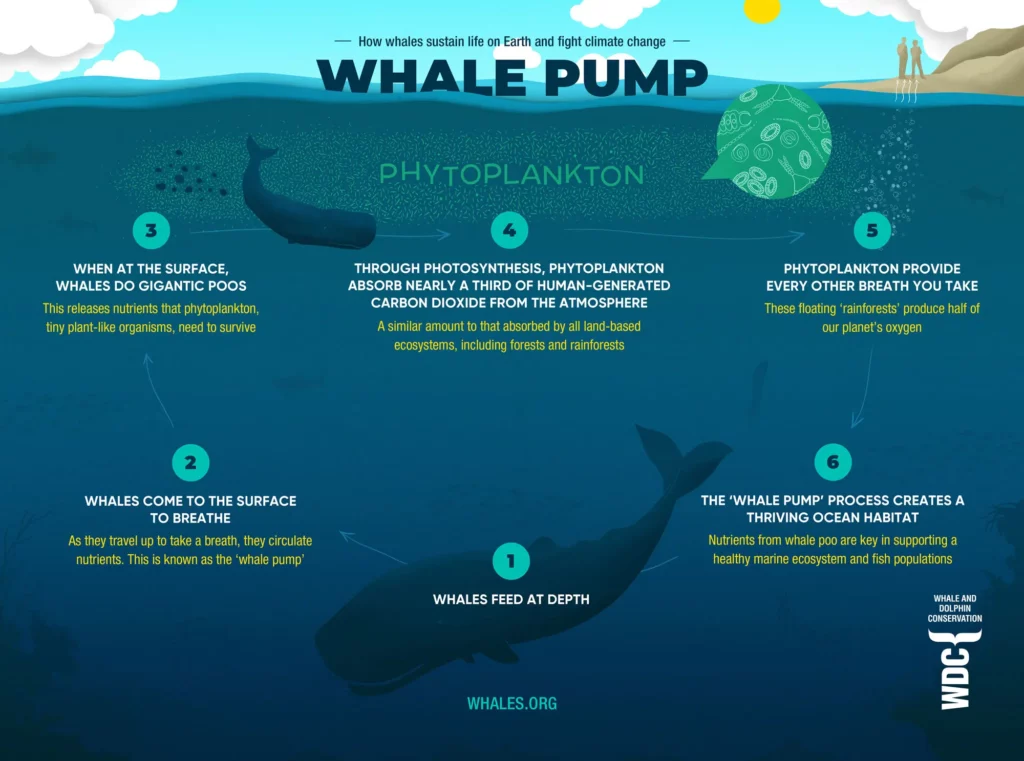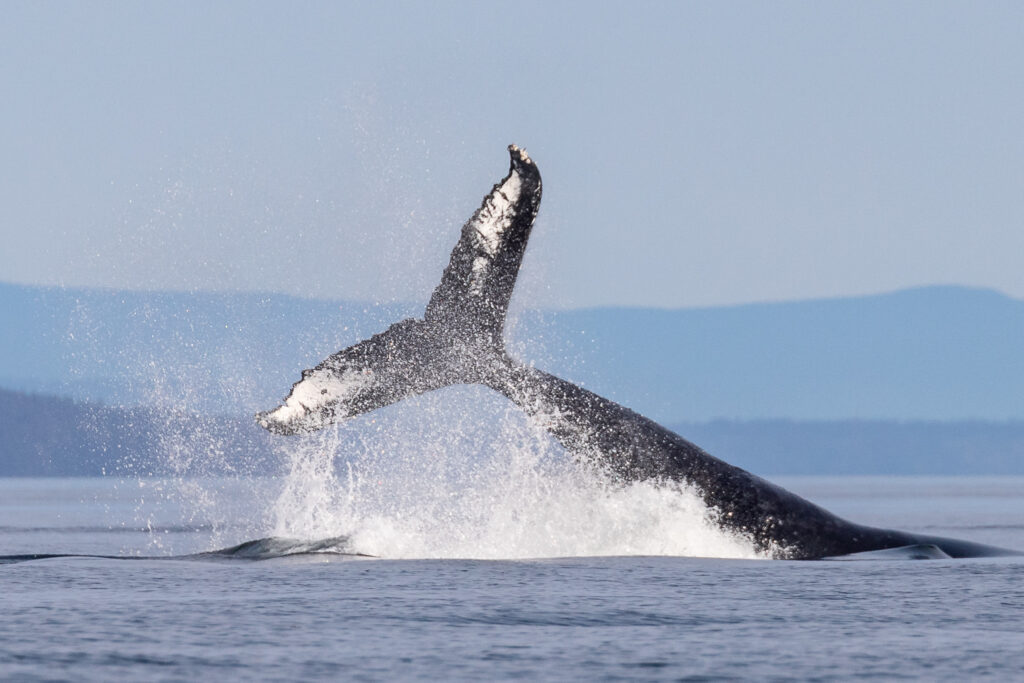Whales are not only magical creatures, but also play a vital role in the health of our planet. As we struggle with the effects of climate change, it is crucial to understand the significant contributions whales make in mitigating its impact. One such fascinating phenomenon is the “whale pump”, a process that showcases how (baleen) whales help sequester carbon dioxide and maintain a healthy ecosystem. In this blogpost, we will explore the whale pump and its implications for combating climate change.
The Whale Pump: What is it?
The term “whale pump” refers to the interconnected cycle in which whales contribute to the transport of nutrients from the depths of the ocean to the surface. This process occurs through two primary mechanisms: the migration of whales and their feeding behavior.

- Whale Migration:
Whales undertake long-distance migrations, often spanning thousands of kilometers, in search for food and breeding grounds. During these journeys, they travel from nutrient-rich feeding areas to nutrient-poor breeding areas and back again. As they move, whales transport essential nutrients such as iron and nitrogen from the deep ocean to the surface waters.
2. Whale Feeding:
Filter feeder whales consume vast amounts of krill and other small marine organisms. When they feed at the surface, they release big poos that are rich in nutrients. These nutrient-rich excrements fertilize surface waters, stimulating the growth of phytoplankton, microscopic plants that play a crucial role in carbon sequestration.
Carbon Sequestration and Climate Change
Phytoplankton, fueled by the nutrients brought to the surface by the whale pump, photosynthesize and absorb carbon dioxide from the atmosphere. Through this process, they contribute to the sequestration of carbon, effectively removing it from the atmosphere. In fact, phytoplankton absorb around 40% of the carbon from the atmosphere, which is the equivalent for four Amazon rainforests!
Moreover, when these phytoplankton die, they sink to the depths of the ocean, carrying the captured carbon with them. This mechanism helps to lock away carbon for extended periods, reducing its impact on global warming.
The whale pump’s impact on carbon sequestration is significant. Research suggests that the world’s great whale populations, such as blue whale, humpback whale, and sperm whale, can collectively capture an estimated 200,000 metric tons of carbon dioxide each year. This is equivalent to the annual carbon absorption capacity of approximately 400,000 acres of mature, temperate forests.
Conservation Implications
Protecting whale populations is vital for their role in mitigating climate change – the more whales there are, the healthier the ocean will be and the less carbon dioxide there will be in the atmosphere!
Whales are much more than magnificent creatures that inspire awe and wonder. Their contribution to the fight against climate change through the whale pump highlights their importance in maintaining a healthy and balanced ecosystem. By recognizing the significant role whales play in carbon sequestration, we can appreciate the interconnectedness of our planet and work towards their protection and conservation.
Sources and Further Reading
Chami, R., Cosimano, T., Fullenkamp, C., Oztosun, S. (2019, December 1). Nature’s Solution to Climate Change. IMF. https://www.imf.org/Publications/fandd/issues/2019/12/natures-solution-to-climate-change-chami
Whale and Dolphin Conservation. (2021, November 4). Climate Change – Whale and Dolphin Conservation. Whale & Dolphin Conservation UK. https://uk.whales.org/our-4-goals/create-healthy-seas/climate-change/#:~:text=How%20do%20whales%20help%20combat,change%20and%20sustain%20fish%20stocks
Yeo, S. (2022, February 24). How whales help cool the Earth. BBC Future. https://www.bbc.com/future/article/20210119-why-saving-whales-can-help-fight-climate-change



